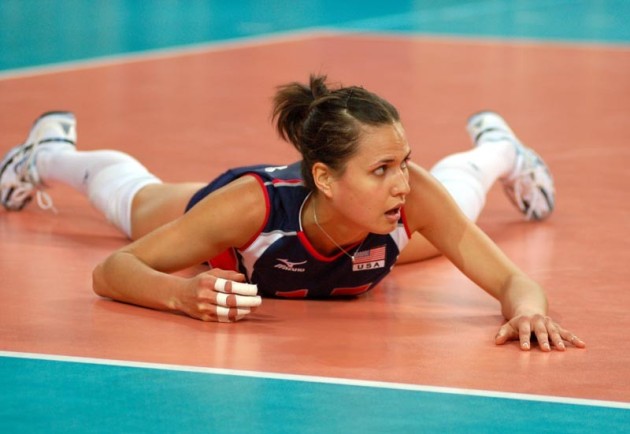
Volleyball Injuries
The repetitive nature of the game can also lead to chronic injuries in the shoulders and legs. Volleyball‘s popularity worldwide has increased the incidence of injury from volleyball, but many injuries are due in part to lack of, or improper, training.
Volleyball has a pretty even incidence of injuries to the upper and lower body. The overhead movements and jumping required put stress on both parts equally. Volleyball injuries include rotator cuff injuries, suprascapular neuropathy, wrist sprains, thumb sprains, and patella tendonitis (Jumper’s Knee).
- Rotator Cuff Injuries: The rotator cuff muscles, which include the infraspinatus, teres minor, and supraspinatus, are placed under a good deal of strain when the arms are raised above the head. The strain increases when a load is placed on the shoulder, such as blocking a shot, spiking a ball, or serving the ball. The injury to the rotator cuff may be acute, due to a traumatic force impacting the shoulder and causing a tear in the muscles. It may also be chronic in nature, due to continued overuse and stress causing a build up of inflammation. Both injuries require rest, ice, and NSAIDs to help speed recovery. A complete rupture of the rotator cuff complex might require surgical intervention.
- Suprascapular Neuropathy: This chronic injury is also caused by the prolonged, and repetitive, overhead position in the game of volleyball. This position is believed to put pressure on the nerve that runs over the top of the shoulder blade. This pressure leads to inflammation and additional pressure, which reduces the ability of the nerve to transmit signals. Rest, massage and flexibility training to relax the muscles of the upper back will help reverse this condition.
- Wrist Sprain: The wrist is a small structure and the force of a ball being struck downward can cause the ligaments to stretch and tear. Falling onto an outstretched hand can also cause damage to the ligaments of the wrist. When the wrist is hyper extended or hyper flexed the ligaments become stretched and torn. This leads to pain, swelling, tenderness, and a reduced range of motion. Ice, rest, and immobilization will help with this injury. Minor sprains may take 2 to 3 weeks for recovery, while a major injury could take as much as 8 weeks.
- Thumb Sprain: The metacarpophalangeal joint of the thumb is the area of injury most common in volleyball. As the ball contacts the hand it can force the thumb backward causing a stretching or tearing of the ligament over this joint. An awkward striking of the ball can also cause this injury. The extent of stretching or tearing in the ligament will determine the amount of recovery time needed. Ice, rest, NSAIDs, and thumb and wrist immobilization are the most common treatments.
- Patella Tendonitis (Jumper’s Knee): The repetitive jumping motion in volleyball causes a lot of stress to the tendon that runs from the patella to the tibia. A complete rupture can occur if a chronic injury is allowed to linger, or if excessive stress is placed on the tendon while jumping or landing. Chronic injury to the tendon includes repetitive inflammation in the tendon that continues to build up. Pain under the knee cap when pressure is applied, pain when contracting the quadriceps muscle, and aching and stiffness after training or playing are all symptoms of this injury. Rest, Ice, and NSAIDs may speed recovery. Rehab of the muscles may also reduce the chances or re-injuring the tendon.